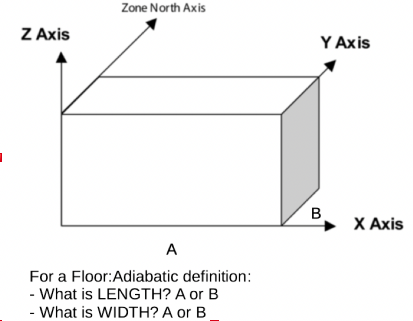What is length and what is width? Along what axis?
In EP documentation there are many references to "Length" and "Width" of a surface. For example, "Floor:Adiabatic" is defined by one corner and the length and the width. What axis do we measure the length on and what axis the width? I could not find this mapping anywhere in the EP documentation. Does anyone have a clue?
For example, referring to the following coordinate system, if I am defining a Floor:Adiabatic object wityh the lower left corner coinciding with the global origin, what do I specify for L and W? A and B, respectively? Or vice versa?







